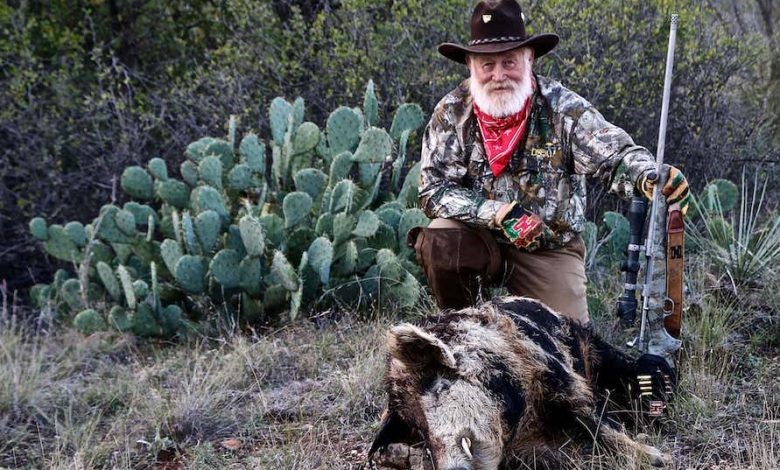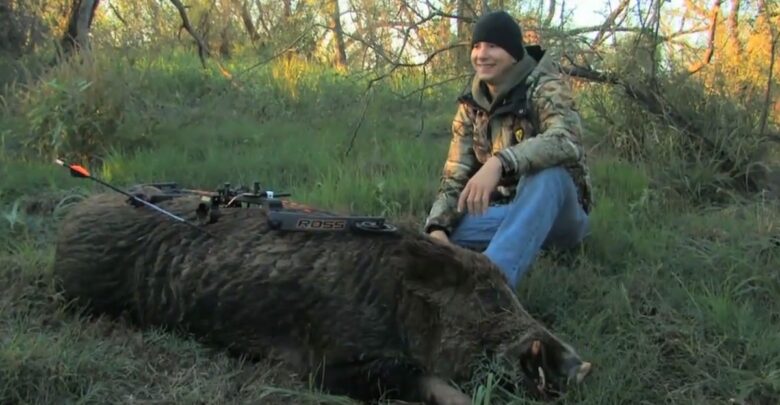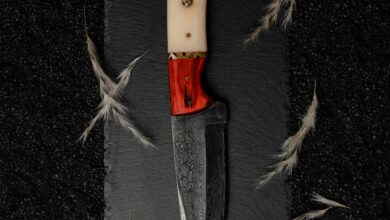
Deer and most big game seasons may be over for the current season throughout much of North America, but not everywhere! Some seasons, such as at our MLDP properties in Texas, can hunt whitetails through the end of February. But if you are not able to hunt such exceptions…fear not! Wild hogs populate many states. Hog hunting possibilities are ever increasing, especially during the cooler times of the year. In other words, the time to hunt wild hogs is “NOW”!
The Tradition of Hog Butchering
Growing up in the country many years ago, when cooler weather arrived during the fall and winter, it was hog butchering time. Hogs, which had been fattened starting in the spring, were finally of a size to be turned into sausage, ham, bacon, and lard. We did all our own curing, smoking, and rendering. As a youngster, once the hog was down”, my job was to help with the scraping, the removal of hair from the hog. This was accomplished by pouring scalding hot water on the extant hog and then scraping off all the hair with a knife. The skin remained intact to be the “rind” on what would become bacon and ham.
Back then, we often butchered hogs that weighed as much as 800 pounds. These were dispatched by a carefully placed brain shot using .22 Short ammo at very close range.
Watch Henry Lever Action Magnum Express | .22 Mag Powerhouse on Hunt with a Henry S3 | E14
That said, I often get tickled when asked about what magnum rounds I used to take some of my biggest or heaviest hogs. Of course, there is a lot of difference between putting down farm/pen fattened pork and wild hogs.
A Memorable 300-Pound Boar
Over the past many years, I have taken and weighed a lot of wild hogs, many of which reputedly weighed over 300 pounds. Interestingly, when most of those “300-pounders” were put on the scales, they weighed 185 pounds. A few years ago, I did shoot a legitimate 300-pound boar while hunting in the Red River bottoms on the Texas side. It was late evening, and legal whitetail shooting time was almost over when I walked into a cut grain field. Two hundred yards away, I could see a big wild boar running right toward me. I quickly again loaded my .270 Win with a Hornady 130-grain Soft Point and propped the Ruger on shooting sticks. At the time, Trijicon’s AccuPoint was not available. It surely would have been nice to have such a quality light-gathering scope with its “point of light” reticle. Now, many years later, that .270 along with several of my other serious hunting rifles, wear Trijicon AccuPoints!
Watch Ruger & Marlin at Shot Show 2023 on The Outdoor Lab S1 | E27
A Close Encounter with a Charging Boar
For follow up shots, I sat down to essentially be on the same level as the big boar, waited until he was about a hundred yards distant, centered the scope on the oncoming hog’s chest, then pulled the trigger. The big hog shuddered but kept coming. I quickly bolted in another round and sent another Hornady bullet into the now faster coming boar. He slowed a bit, and I shot him a third time. He went down thirty yards away.
I refreshed the three rounds in the bolt action’s magazine, chambered another Hornady, and then started walking toward the downed boar.
Watch NEW Savage Model 42 Takedown SHOTGUN / RIFLE on Ultimate Survival Tips E76
Adrenaline and Triumph
The huge boar appeared to be down and out! When I got to within ten steps of the boar, in one quick move, he was on his feet and charging directly at me. I raised the rifle to my shoulder, pointed it at the fast approaching boar, held it in front of him, and fired. At the shot, the boar staggered, slowed a bit, giving me time to bolt in a fresh round. As I did so, he recovered and was coming fast and close! The boar was only four feet from the end of the muzzle when I pulled the trigger! The bullet struck the huge boar between and just above his eyes. His lower chin fell on the toe of my left foot.

Exciting! I pulled my foot out from under his chin, stepped to my right, and put another round into him, this time into his left ear.
Reflecting on the Hunt
Later that night at a local deer camp, we weighed my boar at 327 pounds. One of the biggest and obviously most tenacious boars I have ever taken was as big as he was, complete with 3-inches of lower tusks showing and a thick cartilaginous shield protecting his shoulders and rib cage. He had no strong boar odor. His meat was tender and succulent!
The Poor Man’s Grizzly
Not all wild hogs provide quite that kind of adventure, but the potential is always there, enough so that my long-time friend J. Wayne Fears and I used to refer to wild hog boars as “The Poor Man’s Grizzly”!
I am a firm believer in “using enough guns”.
Watch .223 vs .308 Hog Hunting – Thermal Annihilation! on The High Road with Keith Warren S2020 | E21
I mentioned “putting down” huge-bodied hogs with .22 rimfires, but these were unusual circumstances. That said, I know a lot of hunters who use .223s, .300 Blackouts and the like. I have shot hogs with those rounds as well, and certainly with Hornady ammo, they will dispatch wild hogs! But, given a choice, particularly when I am hunting spot and stalk wild boar, my favorite way of hunting, I like larger caliber rifles topped with Trijicon AccuPoint or Huron scopes.
Choosing the Right Caliber and Optics
One of my favorites is my .275 Rigby Ruger No. 1, topped with a Trijicon AccuPoint and shooting Hornady 140-grain Soft Points. Another is a Ruger M77 Guide Rifle in .375 Ruger, topped with a Trijicon 2.5×12.5×42 scope and shooting Hornady’s Outfitter 250-grain GMX. I have used this latter combination not only here in North America for wild hogs and other big game species, but also in Africa and Europe.
Watch 1-Shot Kills, Hippo & Crocodile. Kimber Caprivi 375 H&H Magnum Reviewed by Ron Spomer on Ron Spomer Outdoors S1 | E1
Embracing the Hog Hunting Season
Hunting hogs can provide great adventure, but it also comes at a time when there is little else to hunt other than possibly predators. Wild hogs, too, can often be hunted in conjunction with other hunts. Beyond adventure, wild hogs are extremely good to eat, especially the younger ones!
Winter temperatures are here. I think it is “hoggin’ time”! Don’t you!
_________________________________________________
References
“View From a Virtual Creek, Post Forty-six – Dallas Safari Club.” Dallas Safari Club, 15 Dec. 2022, www.biggame.org/view-from-a-virtual-creek-post-46.
Hoggin’ Time by Larry Weishuhn | Trijicon®. www.trijicon.com/community/post/hoggin-time-by-larry-weishuhn. Accessed 8 Aug. 2023.
_________________________________________________
For more information and to explore our content, visit our website at https://www.carbontv.com.
For more exciting outdoor content and updates, make sure to visit our blog at https://blog.carbontv.com.
_________________________________________________
Explore CarbonTV
Live Cams | Live TV | Shows | Films | Podcasts | CarbonTV Outfitter Services | Firearm Safety | Store

